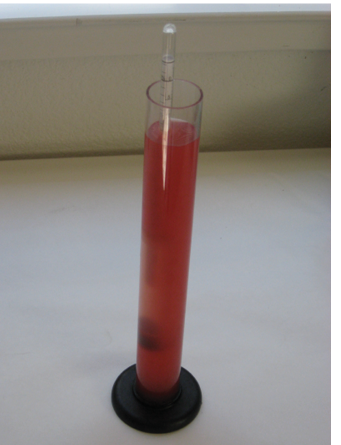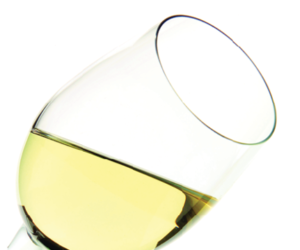
Ah, the hydrometer. It’s one of the most basic, yet also one of the most important pieces of equipment home winemakers have at their disposal. For less than $10, a hydrometer gives us the sugar content of our must, tracks the progress of fermentation, and tells us approximately how much alcohol is in our wine.
A hydrometer measures the specific gravity of a liquid solution. In the case of winemaking, a hydrometer is used to measure must or wine density, which is increased by fermentable sugars and other must/wine substances. During fermentation, yeast eats the fermentable sugars, producing ethanol and carbon dioxide. As the yeast eats the sugar, the specific gravity decreases. The hydrometer is used to measure this density change.
HYDROMETER BASICS
Hydrometers are made of glass with a weight at the bottom and typically three scales of measurement along the sides of its long narrow stem. These three measurements are specific gravity, Balling/Brix (the percent sugar by weight), and potential alcohol. When placed in liquid, the weighted end is submerged and the top floats above the liquid. Take the reading at the top of the liquid (surface tension will cause the liquid to climb the sides of the hydrometer slightly, creating a “meniscus” — use the reading at the bottom of the meniscus). The specific gravity readings usually range from 0.990–1.120. The specific gravity of pure water at 60 °F (15.5 °C) is 1.000, or 0 °Brix.
HOW TO USE IT
Readings should be done with a sample of the must or wine in a clear cylinder (hydrometers are often sold in a plastic protective case that can be used, or you can buy a hydrometer jar or flask). This allows for an easy line of sight to get a measurement and prevents the risk of exposing the entire batch to contamination by dipping the hydrometer into the ferment. Your sample can be collected from the fermenter using a clean, sanitized wine thief, or ladle. As long as you are gentle in taking your sample, the fear of oxidizing your wine should be minimal as the top of the fermenter is layered with CO2 after fermentation begins, which will protect it for the short time the fermenter is open. Pour the sample into your cylinder and measure the temperature with a thermometer (you may want to first filter the must or wine through a paper filter using a hand or vacuum pump to remove as much suspended matter as possible). Then gently place the hydrometer into the sample, making sure the hydrometer is floating and not sunk all the way to the bottom (if this happens, you need more liquid). If bubbles gather around the top sides of the hydrometer, give the hydrometer a spin or wait for the bubbles to dissipate as they will affect buoyancy. Then record the specific gravity, Brix, and potential alcohol measurements. Many hydrometers are calibrated to measure liquid at 60 °F (15.5 °C). If your sample is a different temperature than what yours is calibrated to, use a temperature correction chart for adjustments (these often come with hydrometers, and are also available online).
WHAT IT MEANS
Knowing the specific gravity (and therefore the sugar concentration) of your wine wine can be useful prior
to, during, and after fermentation.
Before fermentation, this measurement gives a basis for predicting the amount of alcohol that may be produced during fermentation. During fermentation, measurements will show you how much of the sugar has been consumed by yeast — giving you an idea of how quickly fermentation is proceeding. For certain styles of wines in which you may want to halt fermentation before it reaches dryness (when all fermentable sugars have been converted into alcohol, which is about 0.990 SG) — such as sweet wines that you do not intend to back-sweeten or Port styles — monitoring your fermentation closely near the end of fermentation is critical so you do not miss this small window. The hydrometer will also show when you have reached your final specific gravity and it is time to rack the wine off the yeast and sediment.
With recorded specific gravity (Brix) and potential alcohol readings at the beginning and end of fermentation, you can use these numbers to determine the approximate percent alcohol in your wine. There are a few different methods of doing this that will lead to similar results. One of the more popular ones is subtracting the final gravity from the original gravity and multiplying by 131. For example, if the initial reading is 1.090 and the final gravity is 0.990, then 0.100 x 131 = 13.1% alcohol by volume (ABV). Another way to determine approximate ABV is to use the initial potential alcohol scale on the hydrometer. To do this, subtract the final potential alcohol from the pre-fermentation potential alcohol to get your final ABV.
Using a hydrometer is easy, and once you understand how to use it properly you can take a lot of the guesswork out of winemaking.







